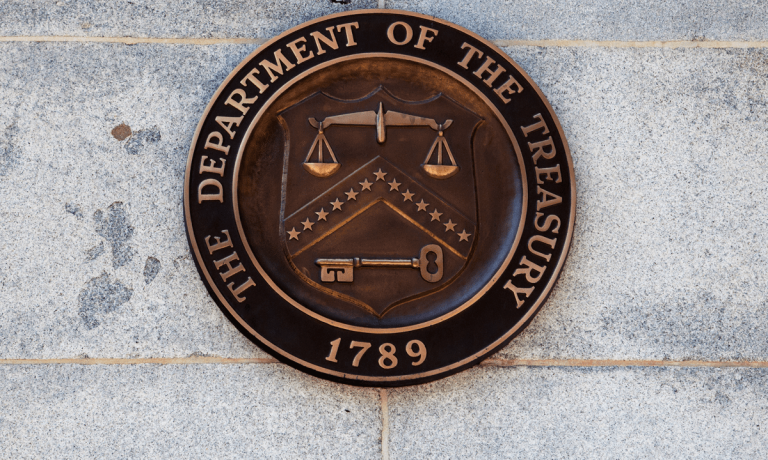
Anyone expecting the blueprints for legislation to regulate cryptocurrencies from the three reports the Treasury Department released Friday (Sept. 16) will be sorely disappointed.
While extensive, the reports produced in line with President Biden’s March 10 executive order on cryptocurrencies and digital assets don’t provide many specific recommendations or policy decisions other than one focusing on illicit financing.
See also: Biden’s Executive Order Set to Fast-Track Crypto Policy
The others, Crypto-Assets: Implications for Consumers, Investors, and Businesses and The Future of Money and Payments, are more reviews and broad statements of intent.
What the reports don’t include is a sense of urgency on the need to provide a specific set of rules and regulations governing the cryptocurrency industry, including stablecoins and central bank digital currencies.
There’s a reason for this that is spelled out clearly in the crypto assets report: The Treasury Department doesn’t think it’s that urgent because crypto hasn’t really started to affect the broader financial markets and economy.
“Despite the recent expansion in the number and type of crypto-assets and activities, crypto-asset products are primarily used to trade, lend, and borrow other crypto-assets,” it said. “Their use in performing other activities is currently limited and the potential for blockchain technology to transform the provision of financial services, as espoused by developers and proponents, has yet to materialize.”
In a section dealing with the fraud, scams, theft and market manipulation rampant in crypto, the Treasury said, “the potential financial inclusion benefits of crypto-assets largely have yet to materialize.”
Much the same thing can be seen in the “Future of Money” report’s view of stablecoins:
“While today stablecoins are primarily used to facilitate trading, lending, or borrowing of other digital assets, proponents believe that stablecoins could become used widely as a means of payment by households and businesses, as well as offering some improvement to the efficiency of cross-border payments by reducing the number of intermediaries in a payment chain.”
A Foundation
In releasing the reports, Treasury Secretary Janet Yellen called innovation “one of the hallmarks of a vibrant financial system and economy.”
But she added, “innovation without appropriately addressing the impact of these developments can result in significant disruptions and harm to the financial system and individuals, especially our more vulnerable populations.”
What the reports aim to do, her statement said, is “clearly identify the real challenges and risks of digital assets used for financial services … [and] provide a strong foundation for policymakers as we work to realize the potential benefits of digital assets and to mitigate and minimize the risks.”
What’s Next
To an extent, the reports said that the political need for an immediate legislation proposal isn’t there, in part because Congress has already admitted that nothing will get done this year, especially with what promises to be a highly divisive election coming in less than six weeks.
Read more: Senate Crypto Bill Debuts and Crypto Industry Gets Big Wins
Still, the Treasury’s approach means that the legislative proposal by Sen. Cynthia Lummis (R-Wyo.) and Sen. Cynthia Gillibrand (D-N.Y.) will have a lot more time to influence the agenda if for no other reason than it has the only specific approach to questions like when a cryptocurrency is or isn’t a security — which has a huge impact on its use in payments, as security tokens would require a capital gains tax for every transaction.
Despite a heightened sense of urgency about stablecoins following a run last spring that caused about $48 billion of investments to disappear, policy differences have largely caused Republicans and Democrats to agree to that it will not happen before 2023 either.
See also: US Stablecoin Bill Hits a Snag as Negotiations Break Down
This isn’t to say that some legislation isn’t coming, just that we haven’t really seen its shape yet.
More of the Same
The recommendations in the crypto-assets report cover three broad areas: the need to crack down on illegal activity; the need to keep enforcing existing regulations while developing new ones to fill gaps; and the need to launch an extensive effort to educate consumers, investors and businesses about safely involving themselves with digital assets.
The report calls for increased oversight of consumer protection agencies, regulators and law enforcement, as well as improving and expanding cross-agency coordination of enforcement and intelligence sharing.
Another recommendation to raise the hackles of crypto investors and developers is a call for more aggressive action on the part of existing regulators to issue guidance and rules “as needed,” and to clarify existing regulatory requirements. It also calls for better “plain language” guidance.
While clear regulation is what the crypto industry has been clamoring for most loudly, what they want is a uniform new set of rules — and more specifically, rules that offer more leeway for innovation and especially get most cryptocurrencies out from under the control of the Securities and Exchange Commission. For his part, SEC Chairman Gary Gensler has made his perspective very clear — everything but bitcoin is a security — and the agency has enforced that aggressively.
A third and final recommendation is for the Financial Literacy and Education Commission (FLEC) “to ensure that U.S. consumers, investors, and businesses have access to trustworthy information on crypto-assets,” about how the crypto industry and technology work so they can understand its risks as an investment and in areas including the risk of crypto investing and the frauds and thefts specific to the industry.
For all PYMNTS Crypto coverage, subscribe to the daily Crypto Newsletter.